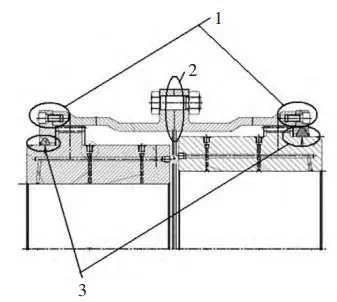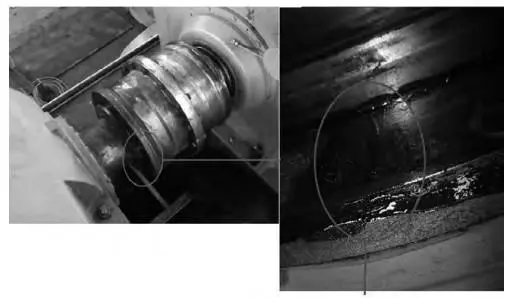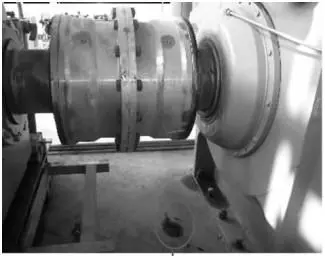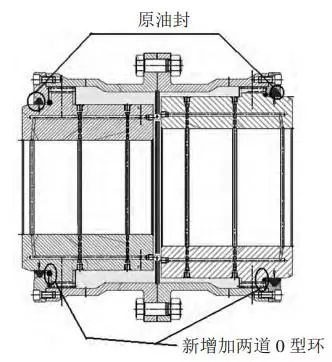Maintenance Methods for Leakages of Gear Couplings
Introduction
A gear coupling is a kind of rigid coupling. It is composed of a annular gear and a flanged half-coupling as well as other accessories. The number of outer teeth and internal teeth are the same. The operation of a gear coupling relies on the socket and force between internal teeth and outer teeth, which can ensure the relatively rotation of two shafts. The structure of gear couplings is shown in figure 1.
The two shafts shift when a gear coupling is working. At the same time, the internal and outer teeth surface slide axially and periodically. Therefore, gear couplings are usually applied in large equipment or equipment that need axial motion compensation. There are friction, caused by axial displacement between inner teeth and outer teeth, which certainly result in abrasion of teeth face and power loss. Thus, appropriate amount of lubricating oil should in filled into the inside of gear couplings to guarantee good working condition. The internal teeth sleeve and outer teeth sleeve are not static seal completely. They move continually. Therefore, good sealing is needed for the internal teeth sleeve.

Fig.1 Diagram of gear couplings
1. outer teeth sleeve
2. internal teeth ring
3. seal ring
4. reamer bolt
5. lubrication hole
1. Leakage and Reason
As shown in figure 2, there are totally three leakage on the gear coupling. The first leakage takes place at sealing gland bolts. The second leakage is located at the flange joint place, which is statically sealed. The third leakage happens at the oil sealed place, which is dynamically sealed.
Leakage 1 and leakage 2 are usually caused by uneven fastening or unsuitable sealant. However, the reason for leakage 3 are the damage of oil seal in most occasions.

Fig.2 Leak location
1. sealing gland bolts
2. flange joints
3. oil seals
2. Analysis of Reasons
Figure 3 is the leak situation of a big gear coupling that our company supply to a Queensland Alumina Limited Company. This gear coupling has high operating frequency and big load power (1124KW), which gives rise to oil seal tired and become loose during long running time. And then, lubricating oil leakage took place inside of the gear coupling. Equipment maintenance personnel all know that static seal leakage is easy to solve. All it needs is to add gasket or daub sealant and tighten again. Nevertheless, it is very hard to solve leak of dynamic seal, and it is doubly difficult to solve the oil seal leakage for the big gear coupling.

Fig.3 Leakages of gear couplings' oil seal and shaft seal edge

Fig.4 Leakage grease
3. Maintenance Examples
Workers have already solved leakages of 5 PCS big gear couplings, and summarized some new maintenance methods. They get rid of costly maintenance methods, which replace the oil seal when couplings leak. They also greatly improve the speed of equipment maintenance and reduce maintenance complexity and costs.
The usual maintenance method is replace with new oil seal. Maintenance for each equipment needs at least 7 days and 20000RMB per day. The price of a seal ring is RMB 28012 and 10 seal rings are needed for 5 gear couplings. According to the actual conditions, the service life of these seal rings is only one year in general situation.
Our usual maintenance method is:
1) Changing the oil seal. It is rather complicated to replace the old oil seal with a new one. It needs to remove the reduction box with 11.5t weight from original place before demounting the coupling. Professional hydraulic tools should be used to demount the coupling. The rental fee for professional hydraulic tools are nearly 20RMB. The expensive maintenance cost makes this method almost impossible.
2) Another method is change more thicker lubricating oil. The original lubricating oil of the coupling is 680# heavy duty industrial gear oil. Only 1000# heavy duty industrial gear oil can be used when increasing the viscosity of lubricating oil. We expected to relief leakage through changing more viscous lubricating oil and filling grease in the oil seal. Nevertheless, it failed and there were still a lot of leakage.
We redesigned the maintenance plan after studying the sealing mechanism of the coupling. We add a new O ring seal on the gear root and gland of the coupling. A 10 mm O-ring can take full advantage of of the space before oil seal, changing the dynamic seal to "relatively static seal". The actual measurement width of the space is about 8 mm and the activity displacement is less than 2mm. The O-ring can just make full use of the sealed space and activity of outer teeth sleeve. Squeezed by gear root and gland, the O-ring pushed all lubricating oil into the internal of the coupling (As shown in figure 5). Well, the leakage was solved perfectly. we applied the same method to the other leakages and also got good results. The couplings have worked stably for 8 months since then and no leakage any more. No big maintenance work is done to the equipment after that. The maintenance time for each equipment is only 3 hours and cost less than 100RMB.

4. Notes for Maintenance
Coupling maintenance should be done according to the following methods: 1) Checking the coupling teeth meshing. As to the contact area, the height along gears should be more than 50% and the width should be more than 70%. The tooth surface can not have severe pitting corrosion, abrasion and crack. 2) The whole outer teeth ring moves within 0.03mm, and the head face moves no more than 0.02mm. 3) One needs to follow the original tags and data when re-install the middle sleeve and other components. 4) Using a torque wrench to tighten bolts evenly.
